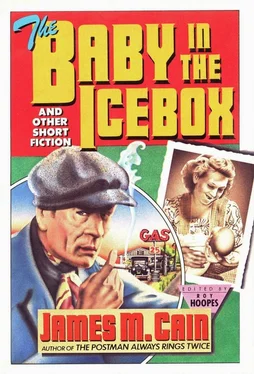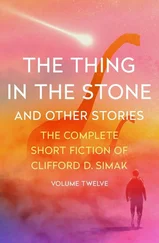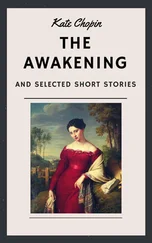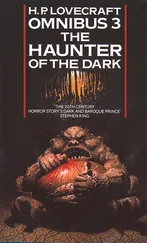The following year, still needing money and having a difficult time adjusting to the mood of wartime America, Cain wrote another serial, a story about the involvement between a Reno sheriff and a movie star whose husband is murdered. It was essentially a rewrite of his unproduced play, 7-11, about a Broadway actress, a New York writer, and a murder in a nightclub similar to “21.” He called the story Galloping Domino, but it also failed to sell to either the magazines or a studio.
His next and final attempt at a serial came four years later. By then, Double Indemnity had been published in hardcover and made into a movie, and one of its stars, Edward G. Robinson, had been asking Cain if he would write another story featuring Keyes, the insurance agent Robinson plays in the film. Cain wrote a story about an insurance agent named Ed Horner and a beautiful woman involved in a complicated divorce action in Reno. It also included the character Keyes and several references, in the first draft, at least, to Double Indemnity. But Robinson did not like the story, which Cain called Nevada Moon and, like Galloping Domino, it never sold to either a magazine or a studio.
Cain’s curious career as a magazine serial writer is even stranger when you consider the book-publishing history of these six serials. In 1943, Knopf gathered three of them — Double Indemnity, Two Can Sing (now called Career in C Major), and Money and the Woman (changed to The Embezzler) — into a single hardcover volume titled Three of a Kind. Considering that Cain thought Double Indemnity a “piece of tripe,” and that all his magazine serials were written as commercial quickies, the collection was given a remarkable reception. It was highly praised by the critics, with John K. Hutchens calling Cain “a writer who holds you by the sheer, dazzling pace he sets.” Of the three serials in the Knopf hardcover collection, only Double Indemnity had not already been made into a movie. But the literary response to Three of a Kind enabled Cain’s Hollywood agent, H. N. Swanson, to revive studio interest in the story, which resulted in the now-classic Billy Wilder-Raymond Chandler film.
In 1949 the Saturday Review and the American Library Association compiled a list of books by American authors published in the previous quarter century that librarians felt were the most popular with their readers, and Three of a Kind was the only Cain title on the list. Then, in 1969, Knopf republished Double Indemnity in a hardcover collection called Cain X 3. It was a Book-of-the-Month Club selection and, more than any other of his books, helped create Cain’s “Re-Incarnation,” as he called it, in the 1970s. Today Double Indemnity and Postman continue to live as American classics of suspense writing and will probably give Cain the literary renown which he felt was the only thing that mattered to a writer — other than making a good living at his trade.
Cain’s four other serials also had a curious publishing history. In 1942, after the success of Three of a Kind, Knopf decided to publish Love’s Lovely Counterfeit, despite its anti-American flavor. Although reviewers were hard on the book, it sold very well, and Mencken thought it was one of the best Cain ever wrote. Then, in the late 1940s, with Cain at the height of his fame, Avon published as paperback originals the other serials which Cain had not been able to sell. All three were given new titles — Modern Cinderella became The Root of His Evil, Galloping Domino became Sinful Woman, and Nevada Moon became Jealous Woman. Cain did not like the new titles, but by then he did not really care. He felt that being published as a paperback original was the same as being published in magazines; it did not really count in the literary sweepstakes. Recently, G. K. Hall brought out the three serials in a hardcover volume called Hard Cain, and the three serials, as well as most of his other books, continue to be published in reprint editions around the world, including a series of Cain titles now selling very well in Vintage paperbacks. In fact, paperbacks have been primarily responsible for giving Cain the worldwide literary reputation he valued.
The serial included in this collection — Money and the Woman — was written in early 1938 after Cain had experienced one of the few writer’s blocks of his long career. He had just come back from a trip to Europe and had driven through West Virginia to gather material for The Butterfly, which he was finding impossible to write. He had also been hired briefly by Universal Pictures to work on a script, The Victoria Docks at 8, but then was abruptly fired for reasons unknown. He went back to his typewriter, but could not seem to get going, until finally he had an idea for a story (“The Girl in the Storm”) and then a serial. The serial was triggered by a friend who worked for the same insurance company in Baltimore where Cain’s father had worked. The friend had sent him a study — “1001 Embezzlers” — asking Cain to comment on it. Cain responded with an excellent critique and then began to think about a story involving a man who mortgages his house to help a woman return $9,000 to a bank. Liberty bought it for $4,000, and by the time it finally appeared in Three of a Kind, Cain had decided it was one of his favorite stories. “In The Embezzler,” he wrote in a preface to the Knopf collection, “I find writing that is much simpler, much freer from calculated effect, than I find in the other two [Double Indemnity and Career in C Major].”
Cain was pleased with the collection when it was published in 1941, and he wrote Knopf: “Later, if some of my writing kicks me into prominence, it may be a title that will have occasional spurts of activity.”
Three of a Kind has long been out of print, but the three stories — as most of Cain’s fiction — continue to live.
R.H.
Money and the Woman (The Embezzler)
I first met her when she came over to the house one night, after calling me on the telephone and asking if she could see me on a matter of business. I had no idea what she wanted, but supposed it was something about the bank. At the time, I was acting cashier of our little Anita Avenue branch, the smallest of the three we’ve got in Glendale, and the smallest branch we’ve got, for that matter. In the home office, in Los Angeles, I rate as vice president, but I’d been sent out there to check up on the branch, not on what was wrong with it, but what was right with it. Their ratio of savings deposits to commercial deposits was over twice what we had in any other branch, and the Old Man figured it was time somebody went out there and found out what the trick was, in case they’d invented something the rest of the banking world hadn’t heard of.
I found out what the trick was soon enough. It was her husband, a guy named Brent that rated head teller and had charge of the savings department. He’d elected himself little White Father to all those workmen that banked in the branch, and kept after them and made them save until half of them were buying their homes and there wasn’t one of them that didn’t have a good pile of dough in the bank. It was good for us, and still better for those workmen, but in spite of that I didn’t like Brent and I didn’t like his way of doing business. I asked him to lunch one day, but he was too busy, and couldn’t come. I had to wait till we closed, and then we went to a drugstore while he had a glass of milk, and I tried to get out of him something about how he got those deposits every week, and whether he thought any of his methods could be used by the whole organization. But we got off on the wrong foot, because he thought I really meant to criticize, and it took me half an hour to smooth him down. He was a funny guy, so touchy you could hardly talk to him at all, and with a hymn-book-salesman look to him that made you understand why he regarded his work as a kind of a missionary job among these people that carried their accounts with him. I would say he was around thirty, but he looked older. He was tall and thin, and beginning to get bald, but he walked with a stoop and his face had a gray color that you don’t see on a well man. After he drank his milk and ate the two crackers that came with it, he took a little tablet out of an envelope he carried in his pocket, dissolved it in his water, and drank it.
Читать дальше











